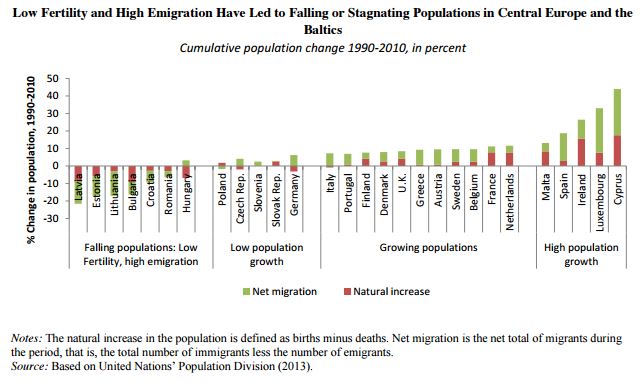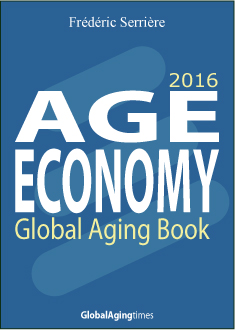Europe is growing older, presenting both challenges and opportunities
Europe’s population is growing older. People are living longer and healthier lives. Wealthier European Union (EU) countries have enjoyed near-universal access to better health care and seen public health promotion and lifestyle changes that have reduced the morbidity and mortality due to heart disease, an effort known as the “cardiovascular revolution”. As a result the EU-15 countries enjoy an average life expectancy of 81 years. At the same time, EU-15 countries have also witnessed a drop in fertility since the 1970s, though recently fertility has stabilized or re-increased in a number of countries.
Central Europe and the Baltic countries are aging more rapidly and for different reasons
Within the EU, Central Europe and the Baltics are aging differently. Fertility has in general fallen to lower levels than in the EU-15, in a number of countries fertility rates are as low as 1.3 or 1.4 children per woman. Increases in longevity are relatively low, however. Average life expectancy is below EU-15 and for most the gap is between four and seven years. Much of the lower longevity is explained by the higher mortality amongst the poor. In addition, the significant outward migration of younger populations is considerably accelerating the aging process and has resulted in a fall in populations in some countries.
Aging without policy changes will present challenges
With only modest increases in longevity and declines in fertility and outmigration resulting in shrinking younger cohorts, countries in Central Europe and the Baltics are can expect to face several economic and social challenges in the absence of adaptive policy responses. Declines in the size of the labor force could present risks to economic growth; fiscal pressures could strain countries’ efforts to provide adequate services as well as income security to their aging populations; firms could lose out on productivity gains if they fail to adapt to an aging workforce. Provided countries can put policies in place that allow them to address these challenges, aging Central European and Baltic countries can continue to realize gains in economic output and welfare, and converge to high EU income levels. This outcome is by no means automatic. It will require early and coordinated policy initiatives covering labor markets, healthcare, education, pensions, long-term care, migration and family policy.
Read the report


